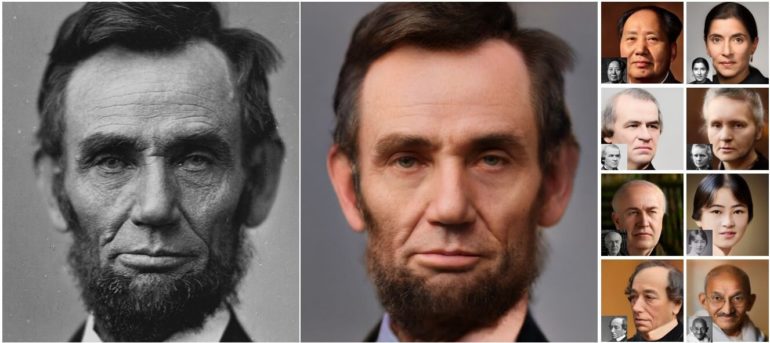Around a century ago when film stocks and photographs were first coming to light, they faced a number of challenges in capturing the essence of an image. In addition to the black and white limitation, photography and film methods also struggled to capture other various elements of the color spectrum, rendering many images of famous figures appearing differently than they may have actually looked.
Now, a new AI imaging technique uses color to restyle old photographs in a way that could almost pass for modern day photographs. This colorization method mitigates the main obstacles of cameras and lenses from the olden days—namely, the orthochromatic nature of those tools, meaning that the photo capture device in question incorporated all detected light into the image without discrimination. The inclusion of all of this light resulted in photos that appeared grainy and noisy, leading to renowned figures such as U.S. president Abraham Lincoln looking far older and wrinklier than he actually was.
These days, especially with the aid of computer graphics, more advanced photographic techniques have taken advantage of the fact that light tends to penetrate the surface of human skin and illuminate the flesh from underneath. This illumination helps to eliminate extra noise and wrinkle marks that marred many images from the early 1900s.
In the past few years, a technique known as Time-Travel Rephotography has helped enhance the quality of older photos by both adding color as well as referencing photos taken by modern day digital cameras in order to ensure realistic turnout for the appearance of human skin. Created by a team of researchers at Google Research, UC Berkeley and the University of Washington, this technique began by using an archive of contemporary digital portraits to generate sibling photos that shared many traits with the colorized black and white photos.
Moreover, Time-Travel Rephotography also works by identifying the shortcoming in quality characteristic of older black and white photos—such as graininess and noise—and correct these issues for the colorized sibling photo modeled after the original.
A primary advantage to this imaging technique lies in the ability to reflect on how historical figures may have actually appeared in real life. Still, the research teams note that with enough rendering and editing in the wilds of the Internet, the corrected images of these older photographs may end up looking quite different from their original versions. In fact, as AI imagine enhancing software progresses further all the time, the need for accurate alteration disclaimers grows ever more essential.
Uncovering the secrets of some of the world’s first color photographs
More information:
Time-Travel Rephotography, arXiv:2012.12261 [cs.CV] arxiv.org/abs/2012.12261
Time-Travel Rephotography, time-travel-rephotography.github.io/
2021 Science X Network
Citation:
New photo colorizing technique uses skin reaction to light for life-like results (2021, April 16)
retrieved 16 April 2021
from https://techxplore.com/news/2021-04-photo-technique-skin-reaction-life-like.html
This document is subject to copyright. Apart from any fair dealing for the purpose of private study or research, no
part may be reproduced without the written permission. The content is provided for information purposes only.
